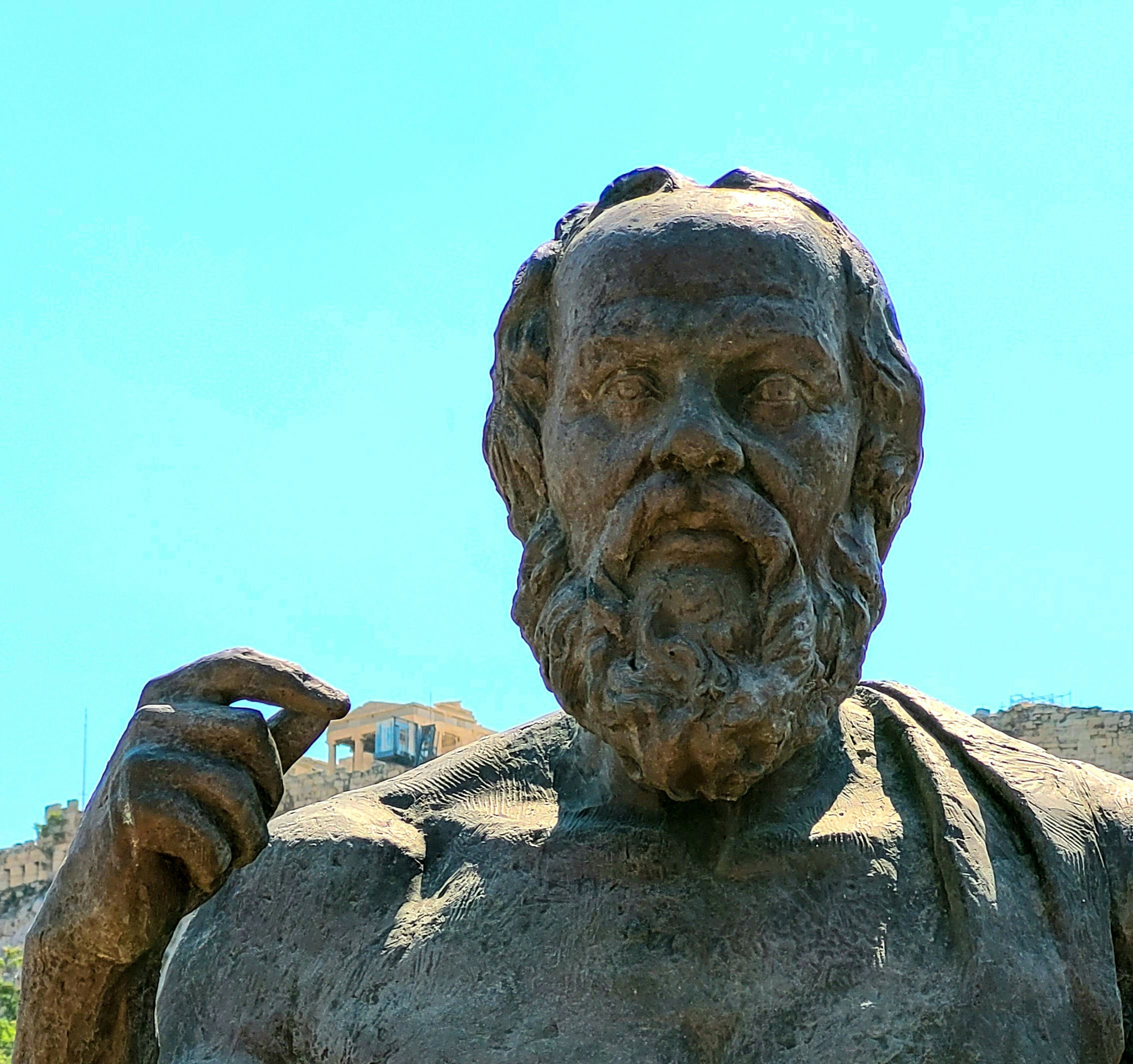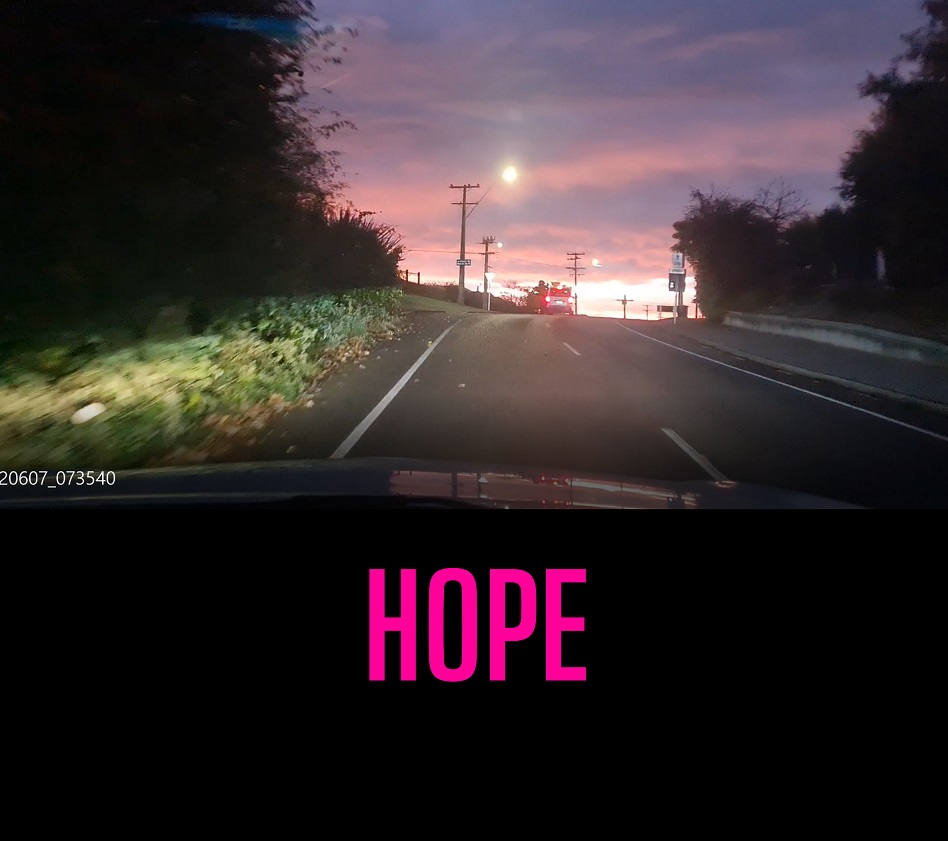.
On the way to work, when I’m feeling particularly naughty, I do the adult equivalent of a kid dawdling to school. I take the long way.
In Timaru there is never a long way to anywhere, so I have to be a little creative
Maybe this is a form of procrastination, but it does give me time to think and recently it’s also begun to symbolise a kind of new hope.
The route I take takes me down into a scenic valley, known imaginatively by us locals in Timaru as “the scenic”, and up through Centennial park. In Autumn the colours of the trees are amazing, but as the days grow shorter the route is often in near darkness, with only hints of a new day in the clouds.
As you climb out of “the scenic” you also climb out of the dark. Up on the rise the new day is always dawning, often with a beautiful sunrise (I’m ignoring the red sky in the morning, shepherds warning saying here) and there is, if you look for it, (and I do) a sense of hope. Even on the crappiest days the climb up to the rise is brighter than the dark of the trip up through the valley.
I’m writing like this because I’m trying to convey a couple of things that we often forget.
One; like the day, we also get to start again, each and every day.
And secondly we get to choose how our new day will start, irrespective of what has occurred before (unless of course you have a car accident on the way to work, and then, well, the choices do, admittedly begin to diminish rather quickly!).
This should give us all a sense of hope.
I’m beginning to use this euphemism a bit more widely, not only in the simplicity of the new day, new start mantra, but also in the way that things are handled around the school.
David expertly talked about the use of time last week. He showed how we all have the same amount of time in any given week, even Elon Musk. Obviously Elon has a few more choices as to how he uses his time and how many people he pays to make his time better for him, but the reality is the same. Time is time, no one is getting any more or any less out of a day.
The choices come in our priorities as David pointed out.
However a couple of weeks ago I was at a local conference and felt swamped by the keynote that the Ministry gave about the Curriculum refresh. I began to wonder what my priorities were going to be. The words of the keynote came bashing like waves across the bow of my Covid swamped waka. Timelines, expectations, new terms, new acronyms but little in details about the support that would come to lessen the load. It was a bit like Covid had never happened, and although I love the idea of the curriculum refresh and the terms Understand, Know and Do, it also felt like back to the future where great ideas come and go, quashed by other great ideas, surpassed by even other ideas, and with no full-on support to, well, give us hope.
If Covid has taught us anything, people are the key to anything and everything in our schools. It’s as simple as that.
Load them up with more and more, and they fall over. It’s as simple as that. If you’re serious about people not falling over then you have to manage the load. By managing the load you need to find a balance. By balancing things well you then also build a sense of hope that everything is going to be fine. It’s the light at the top of the rise.
In our schools we have very little control over the wave that comes from the Ministry of Education. And it’s not the only wave that continues to come our way. There are all sorts of societal waves that continue to crash over our bow. If you don’t have a sense of hope then this relentless bashing is more than overwhelming. It becomes crushing.
Sadly, at this very moment it feels like the country has woken up from a two year slumber and suddenly realised that we’re all gonna be late for some important date. Everyone who is anyone is clambering to get their new thing done, preferably by yesterday. Our professional social media pages seem to be awash with new ideas and opportunities. That’s great, but the cacophony of noise that this is generating is giving me more than an uneasy dose of tinnitus.
We’re most certainly still in the middle of the dark valley of our journey, as winter still bites. And no one really knows how long this valley is going to go on for.
The work around is that we look to make our own hope. We pick and choose carefully what we want to do and we purposefully, deliberately and legitimately ignore the anxiety that might arise from the FOMO of not doing some of these things.
Here are some examples of how we’ve looked at making our own hope in our kura.
Last night at our Board meeting we began with a very small thing. We took something out of the board report that we’ve been reporting on for years and replaced it with nothing. It was a “nice to have” aspect of our report that had begun to get in the way of the quality of the “need to haves” in our meetings. It was an easy decision.
Our Learning Assistants recently offered to help out more with playground and road safety duties. They didn’t have to, they weren’t asked to, but their support has made a lot of teachers very happy by providing a bit more balance to their own loads.
We made certain that all the Teachers attending the fourteen week Te Ahu O Te Reo Maori course would have the school participation money passed directly into their own pockets as koha for the time and effort that they had put into attending the course.
Sure, these aren’t huge things, it’s not rocket science, and many of you will be doing these, but they’re examples of how we can change our own environments and cultures to build that sense of balance and hope.
Maybe it’s time that we take a leaf out of the curriculum refresh and adopt those three key words in everything we do and as a positive by -product creating a sense of hope in our schools.
Understand – that we are human and that we recognise our individual capabilities and capacities
Know – that there is a limit to our capabilities and that a sense of balance increases our capacities
Do – stuff that promotes hope and balance for everyone
And maybe we also advocate for all of our colleagues throughout the land to follow the same simple model of hope. We should be looking for ways to cut back and slow down so that everyone feels that the real needs are not only manageable, but doable.
We should also have the courage to say thanks, but no thanks as all these new initiatives come knocking. And we should embrace the ones that are going to give us the biggest hope.
That way we may all be able to climb out of the valley and into that new light of the day, giving us the courage to give it a go with a fresh start everyday. That’s where we’ll find our hope.
Steve

